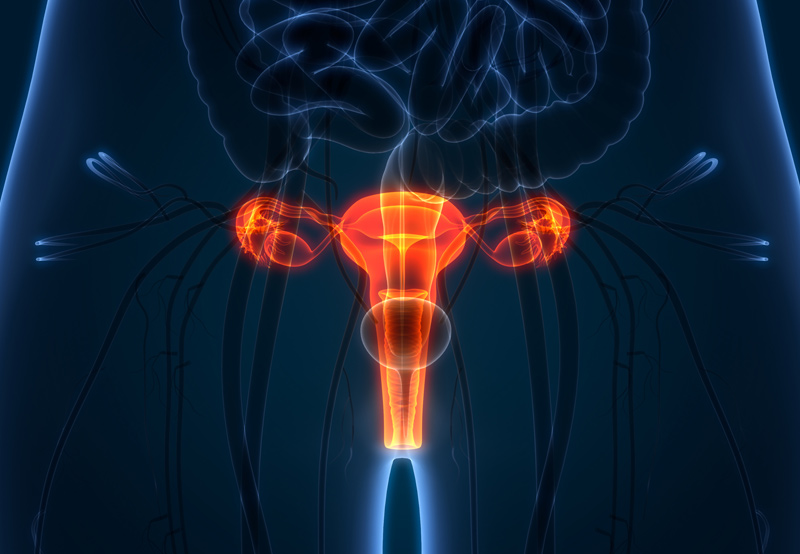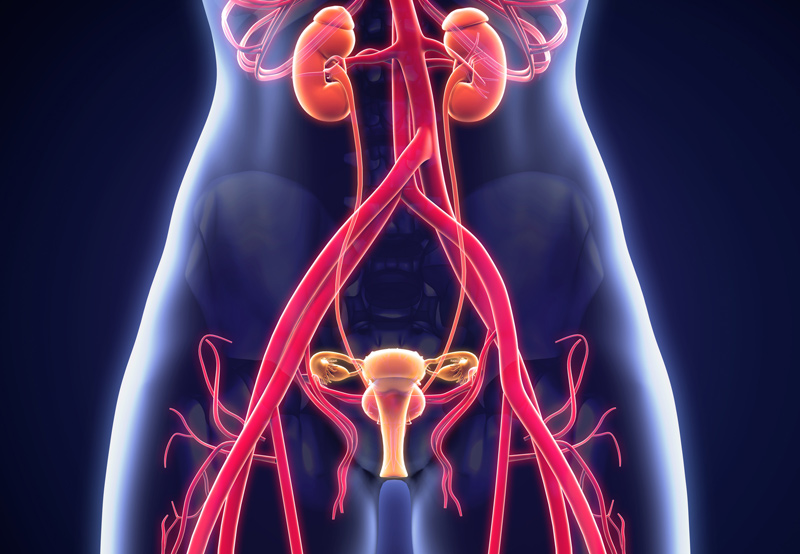

A fistula is an abnormal connection or tunnel between an organ and the skin, or between two organs in the body.
Causes of Fistulas
A fistula may form as a result of:
- Childbirth
- Congenital anomalies
- Inflammation and infection
- Malignancy
- Radiation therapy
- Surgical injury
- External tissue trauma
- Ischemia
- Foreign bodies

Types of Fistulas
A vesicovaginal fistula (VVF) is the most common type of fistula that forms in the urinary tract between the bladder and vagina. This type of fistula may be caused by prolonged obstructed labor leading to pressure necrosis and tissue ischemia to the pelvic floor. VVF may also be caused by forceps or other instruments used during operative delivery.
A post-hysterectomy VVF may be caused by an unrecognized cystotomy near the vaginal cuff. Other contributing causes include improper clamp placement or use of cautery, suture placement into the bladder that leads to pressure necrosis and tissue loss, and infections of the vaginal or perivaginal tissues.
Symptoms of a VVF include:
- Constant urinary drainage through the vagina
- Recurrent cystitis
- Perineal skin irritation due to constant moisture
- Vaginal fungal infections
- Pelvic pain
- Voiding dysfunction
Ureterovaginal fistulas form between the vagina and the ureter. This type of fistula may occur after distal ureteral injuries sustained during gynecological procedures, prolapse surgery, cesarean section, and anti-incontinence surgery. Other causes include radiation therapy, pelvic malignancy, penetrating pelvic trauma, endoscopic instrumentation, and other pelvic surgery.
Symptoms may include:
- Flank pain
- Nausea
- Fever
- Clear vaginal drainage after pelvic surgery
Urethrovaginal fistulas form between the vagina and the urethra. They may occur after anti-incontinence surgery, urethral diverticulectomy, and anterior vaginal prolapse repair. Other causes include instrumentation, trauma, radiation, vaginal neoplasm, childbirth, and pelvic fracture.
Enterovesical fistulas form between the bladder and any part of the bowel in the pelvis. Causes of enterovesical fistulas include diverticular disease of the colon, inflammatory bowel disease, radiation therapy, neoplastic disease, and trauma.
Symptoms may include:
- Recurrent UTIs
- Fecaluria
- Pneumaturia
- Hematuria
Rectourethral fistulas (RUF) form between the urethra and the rectum after anorectal surgery, prostatectomy, external beam radiotherapy for pelvic malignancy, inflammatory disease of the pelvis, and pelvic brachytherapy or cryotherapy.
Neurovascular fistulas form between the vascular system and the urinary tract. They typically occur between the ureter and surrounding blood vessels, such as the iliac artery. Potential causes of this type of fistula include indwelling ureteral stents, vascular disease, pelvic surgery, radiation, and percutaneous procedures to the upper urinary tract.
Vesicouterine fistulas form between the lower segment of the uterus and the bladder. This type of fistula is rare and may occur after a low-segment cesarean section.
Diagnosing Fistulas
The physician will perform a pelvic examination to locate the fistula and determine the size and number of fistulas. The physician will also assess inflammation around the fistula.
Blue dye may be injected into the bladder to identify VVF. A double dye test may be done to identify a ureterovaginal or urethrovaginal fistula. Other tests that may be done to identify a fistula include voiding cystourethrography, urography, and other cross-sectional imaging, with or without endoscopic evaluation.

